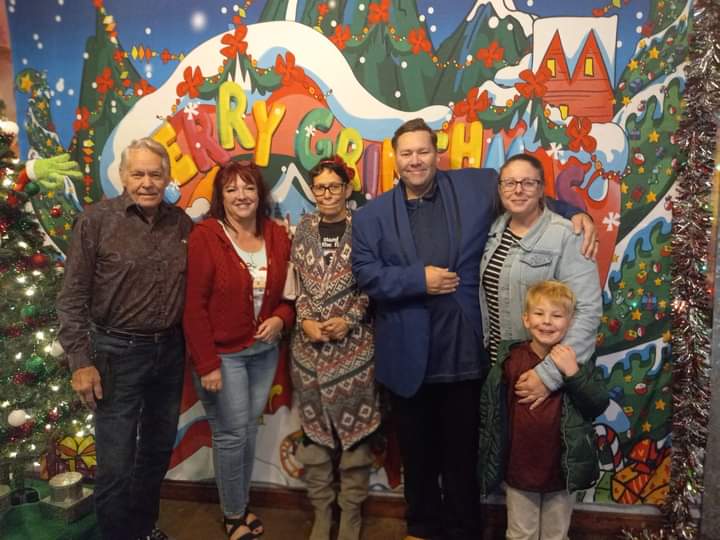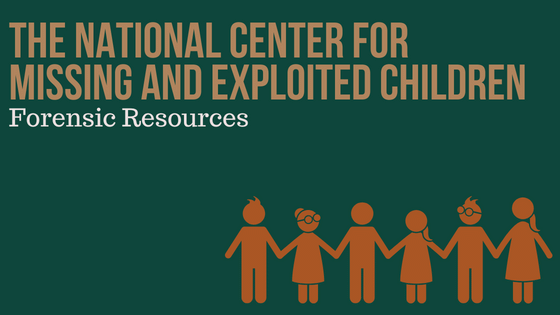Today’s guest blog is written by Patricia Davis, The National Center for Missing and Exploited Children. Reposted from the ISHI Report with permission.
Along a quiet cemetery access road in Woodlawn, Maryland, just west of Baltimore, the body of a teenage girl was found wrapped in a white sheet, someone’s child. She’d been murdered – suffocated – and there was evidence she’d been sexually assaulted. But there were few clues as to who she was, just two brass keys, a “JP” tattoo on her arm and a scar on her right thigh. It was Sept. 12, 1976.
In the mid-1980s, after leads in the case had dried up and DNA was emerging as a promising investigative tool, DNA profiles were developed of the young victim and an unknown male, but no matches were found in CODIS, the FBI’s national DNA database. In 2008, as forensic advances were starting to come at a steady clip, Baltimore police turned to the National Center for Missing & Exploited Children (NCMEC) and its Forensic Services Unit (FSU) for help identifying the teenager known only as “Woodlawn Jane Doe.”
Since that time, an array of NCMEC resources were devoted to the case, including three facial reconstructions, analytical assistance with leads and a comprehensive case review that included the FSU, partner Bode Technology and Baltimore police, all agreeing to pursue additional DNA testing for forensic genealogy.
At long last, 45 years after her body was found, Bode’s team identified a potential name for Woodlawn Jane Doe, and police tracked down relatives and collected DNA samples for comparison. Her family, still living in Alexandria, Virginia, finally had the answers they had long sought, although devastating. Woodlawn Jane Doe was their daughter, 16-year-old Margaret Fetterolf.
“NCMEC never put this case down,” Carol Schweitzer, Program Manager of the FSU, said of the identification made in 2021. “We were always evaluating the case and applying internal resources and emerging forensic resources to help keep it moving forward over the years.”
NCMEC was established nearly 40 years ago, when America finally awakened to the problem of missing and exploited children by a shocking series of high-profile cases, including the abduction and murder of Adam, the 6-year-old son of co-founders John and Reve′ Walsh. Since then, the non-profit organization has become the nation’s largest and most influential child protection organization and has helped law enforcement recover more than 400,000 missing children. Yet, there are many families with missing children still yearning for answers – years, even decades, after their children went missing.
As the nation’s congressionally designated clearinghouse and resource center on missing and sexually exploited children, NCMEC assists law enforcement, medical examiners and coroners when unidentified child remains are found in an effort to give that child his or her name back. NCMEC, which is not a law-enforcement agency, has forged a large number of public and private partnerships, including with forensic labs and professionals who can provide services to investigating agencies that work with NCMEC at little to no cost. NCMEC works closely with these partners to apply the best services and resources that can help advance cases.
Resources available through the FSU include facilitating biometric collection. FSU staff will proactively work to locate sufficient samples for DNA collection, dental and fingerprint records and facilitate them being entered into national databases such as CODIS, NCIC, NGI, and NamUs. The FSU can also facilitate forensic tests that include pollen and soil analysis, forensic genealogy, forensic anthropology, or testing evidence for foreign DNA.
NCMEC’s highly skilled forensic artists also create age progressions of long- term missing children and facial reconstructions of what unidentified children may have looked like in life in hopes that someone will recognize them.
NCMEC has created a social media page called Help ID Me on Facebook, www.facebook.com/helpidme, to highlight the facial reconstructions and other images associated with a case to help spread awareness of these cases and engage the public in helping to resolve them. Since the page was created in 2014, about a dozen cases have been resolved through a tip that was received through the site. More than 39% of unidentified children are not reported missing, yet in every case someone close to them was looking for them. Engaging the public with these images is critical in finding answers.
When investigating agencies have exhausted all leads, NCMEC has found that DNA collection and testing is one of the few viable options for providing answers to these families. And with exciting advances in DNA testing and genetic genealogy in recent years, NCMEC has used DNA to help resolve more than 380 cases of missing or unidentified deceased children.
In 2004, NCMEC began proactively facilitating law enforcement’s collection of DNA from over 2,430 family members with long-term missing children for entry into CODIS. The FSU is also using that information to help resolve more than 660 cases of unidentified deceased children.
FSU also works with investigating agencies to apply forensic genealogy resources to both missing and unidentified child cases. Since 2018, NCMEC has seen four long-term missing children and 65 unidentified child cases resolved through a lead developed by forensic genealogy.
Forensic genealogy is not only helping identify deceased children but also finding long-term missing children who are still alive. On Thanksgiving Day 2022, more than 51 years after she was abducted in 1971 as an infant in Fort Worth, Texas by a woman claiming to be a babysitter, Melissa Highsmith was reunited with the family she never knew.
Through DNA testing, a link was made between Melissa’s own children and her biological parents through a private genetic testing company. It turns out that Melissa, 53 years old when she was located, grew up with the name Melanie Walden and was living in Fort Worth all this time, not far from her biological parents’ home. She has since had her name legally changed back to Melissa Highsmith.
“It’s overwhelming but, at the same time, it’s just the most wonderful feeling in the world,” said Melissa said when her past was revealed. Her parents, overcome with emotion, said that after 51 years, they feared this day would never come.
“I feel that was the best day I ever had in my whole life when I saw Melissa again,” said her mother, Alta Apantenco, who lost her first child when she was 22 months old. “After 51 years, it’s so emotional,” said her father, Jeffrie Highsmith.

Advances in DNA testing and genetic genealogy have given long-suffering families hope and answers.
Dawn Olanick was the first unidentified deceased person’s case to be entered into NCIC on June 30, 1983, an historic moment for missing and unidentified persons that has played a crucial role in investigations ever since.
On July 15, 1982, the body of a teenage girl was found in a cemetery in Blairstown Township, New Jersey. Her face was beaten so badly she was unrecognizable. She was wearing distinct clothing, and her fingernails were painted red on one hand. Over the years, the Warren County Prosecutor’s Office and the New Jersey State Police took advantage of any new technology to learn her identify. With help from NCMEC, Princess Doe’s molar and eyelash were submitted to Astrea Forensics in 2021, one of NCMEC’s partners.
“What is so special about Astrea is that they are able to extract DNA from samples that are degraded or otherwise would provide no value,” said Schweitzer, the FSU supervisor. “We knew that if anyone could get the information that was needed, Astrea could.”
As a result, genotype files were able to be used by Innovative Forensic Investigations, another partner, to build a family tree that would lead to the identity of Princess Doe, who was 17 years old when she was killed.
“This is a very big deal for my family,” Dawn’s cousin said at a news conference. “I’d like to thank Blairstown for treating my cousin like she was one of their own. It touches our family deeply…my cousin is always in my heart,” he said, tapping the photo of Dawn pinned to his chest.
NCMEC’s facial reconstruction of Princess Doe was one of more than 600 that have been created by forensic artists at its Alexandria, Virginia headquarters and shared with the public through traditional and social media.
“Cases of missing and unidentified children are challenging and require a multidisciplinary approach, strategically layering the right resources to help find a resolution and bring them all home,” said Schweitzer. “NCMEC is here to help.”
WOULD YOU LIKE TO SEE MORE ARTICLES LIKE THIS? SUBSCRIBE TO THE ISHI BLOG BELOW!
SUBSCRIBE NOW!





